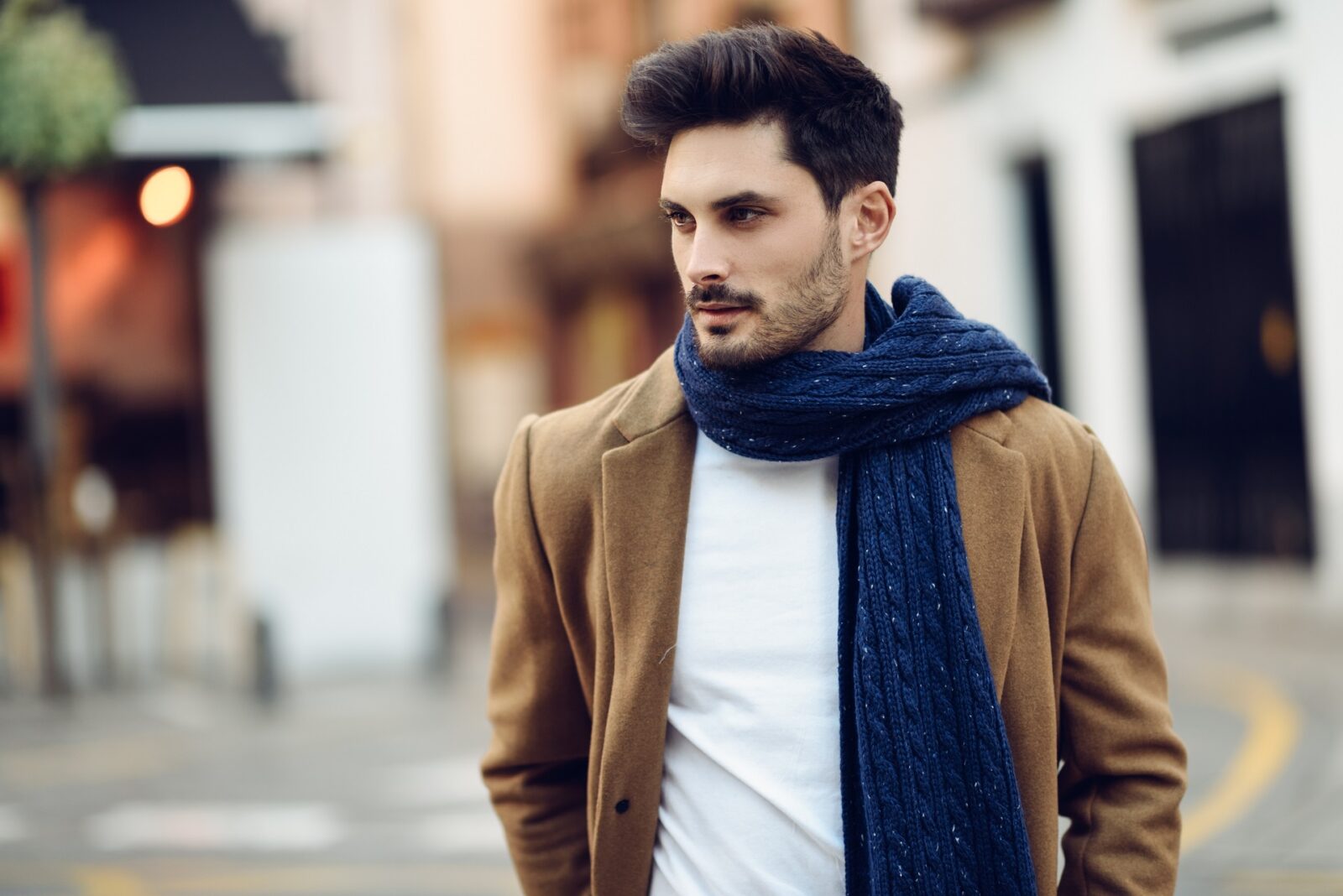Most men’s scarves are roughly 10 inches wide, 70 inches long, and produced using either a strong or designed slice of fabric intended to fold over the neck.
Basically, a scarf is a straightforward square shape of texture.
However most men are perplexed regarding how to appropriately wear one, and more awful, many feel the wearing of a scarf is some way or another delicate.
The motivation behind this article is to handle these issues head on.
First – Wearing a scarf is easy. In this article I’ll spread out a couple of rules and assist you with understanding the fundamentals of picking the right one for your necessities.
Second – Scarves are masculine. They have been a staple in men’s closets for more than 2000 years, with the world’s militaries utilizing them as rank symbol and unit designators. From the Terracotta Warriors of China to advanced desert military units, we see scarves utilized in light of the fact that they offer some benefit in harsh climate. Take a gander at photographs of the world’s most noteworthy military pilots or troopers facing in the Conflict of the Bulge, and you’ll see bunches of scarves, and nary a silly man in sight.
Why Wear A Scarf?
Capacity – Simply put, scarves work effectively by securing a man’s neck. A thick fleece scarf will keep your neck heat on a cool Wisconsin morning, or a light-weight material scarf will protect your neck from the sun and sand once crossing the Sahara.
Energy – Scarves can add a solid component of style, particularly when they acquaint shading with a generally boring outfit. However long it doesn’t think twice about, not many will address even a splendidly shaded piece of cashmere that lights up an investor’s charcoal jacket and watch cap. Notwithstanding, in less utilitarian jobs, (for example, wearing a light weight cashmere scarf inside in lieu of a bowtie) the man doing as such should be truly agreeable in his very own style. It’s additionally a decent dependable guideline to keep the remainder of the outfit basic so it isn’t rivaling the scarf for consideration.
Scarf Build Type
We should keep it basic. You need your scarves to be square shaped and be produced using a material that suits your necessities.
Scarf Width and Length – Width ought to be from 6 to 14 inches, length from 50 to 90 inches, albeit a normal tall man needs a scarf something like 60 inches and a bigger man should search for one in the 70 inch range.
Material – Scarves are normally produced using either fleece, cashmere, angora, cotton, cloth, silk, manufactured materials, or a mix. Weave is vital as massive scarves produced using thick yarns require basic bunches and are not as down to earth.
For winter scarves, stay with rested textures with a delicate surface–you can’t turn out badly with fleece or cashmere. In case you’re searching for a blistering climate defensive scarf–cloth and lightweight cotton are extraordinarily similar to certain engineered materials planned explicitly for this reason.
Approaches to Tie a Scarf
The Drape, or The Most Basic Scarf Style
Just wrap the scarf over the neck and the front of your chest under your jacket. No veritable tying happens in this one, so it’s a free strategy for wearing a scarf inferred more for ornamentation than genuine warmth. It functions admirably in case you’re wearing a suit or sports coat with a profound V-molded front.
Overhand Knot
One of the most straightforward scarf hitches you can learn and wear. The solitary complexity is you need to decide how low or high to wear it. Ordinarily it hangs a bit looser around the neck than different bunches/wraps, so this style is more show than work.
The Fake Knot
The phony bunch looks more intricate than it is. As it’s name shows, it utilizes a bit of trickiness to accomplish the ideal look. This bunch appears best with a designed scarf or a scarf with a thicker weave. You can utilize a medium length scarf here without an issue.
The Twice Round
A chilly climate variation of the once round, the twice around scarf tying method is an extraordinary decision for when you have a truly long and slender scarf and the climate requires the hottest wrap you can assemble. I favor my scarves to be somewhere around 72 inches long for this one.
The “Parisian” or French or European Knot
Additionally called “slip” or just “straightforward” style. This is quick and simple to tie and makes a huge, warm bunch directly at the neckline of a coat or coat, making it a decent wind-plug. It requires a more extended scarf except if you’re utilizing a more slender texture like silk. Massive scarves don’t function admirably as the end bunch can show up excessively huge.











